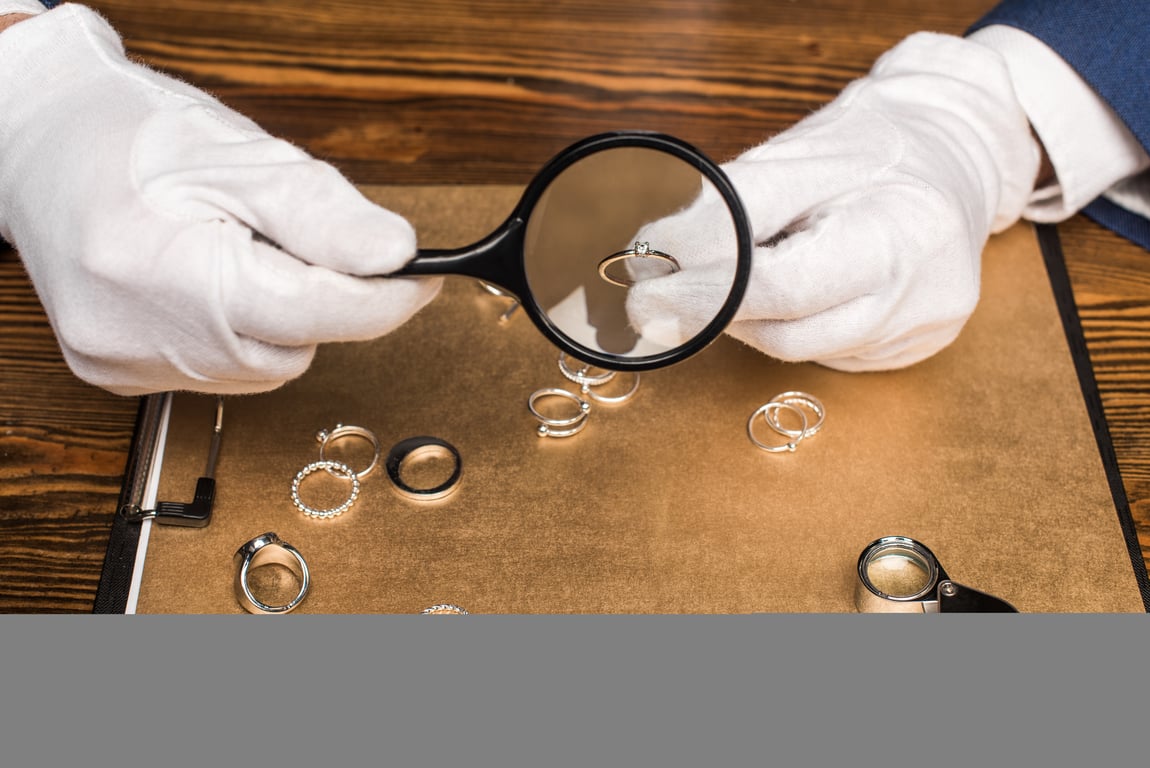Moissanite is a rare jewel. A brief history of moissanite dates back to the fall of the meteorite. The amount of this beautiful diamond-shine mineral found in nature is negligible. It can only be found in corundum deposits, kimberlite rocks, and some meteorites. And this is the main thing to remember when you see the word “moissanite” on the jewelry label: it will always be not a natural stone but its artificially grown brother, carborundum, or silicon carbide.
But in space, real moissanite is not enough. It is contained in dust clouds formed from carbon. A study of the Murchison meteorite led scientists to conclude that its constituent silicon carbide generally formed far beyond the boundaries of the solar system. In the previous article, we covered the topic of classic engagement rings, and in this article, we explore the origin story of moissanite.
History of the discovery of the Moissanite
The Diablo Canyon meteorite fell many thousands of years ago in the United States, in Arizona. In 1893, the French chemist Ferdinand Frederick Henri Moisson began to actively study this space guest.
So the scientist first discovered the smallest fragments of a completely new mineral. These were small, dark green grains and blotches in a meteorite. The stone was spectacular, but perhaps only under a microscope. The sizes of moissanite crystals in nature are so small that they are of no interest for jewelry, unlike synthetic moissanite stone.
Synthetic moissanite production formula patented by Edward Goodrich Acheson on February 28, 1893. He invented powdered silicon carbide (SIC) and, as a result, not only established large-scale production of carborundum but also invented a furnace in which synthetic material is produced today. Edward Acherson became the founder of the specialized company, The Carborundum Company. However, this was not moissanite yet.
Silicon carbide received the commercial name carborundum
The color of the crystals ranges from dark yellow to greenish black, which is visually almost black due to color saturation in the opaque, hexagonal shapes. The length, as a rule, does not exceed 2–5 millimeters in length, with a thickness of less than a millimeter. Material suitable for technical needs, like abrasive minerals.
Small, almost black crystals of nitrogen carbide and other synthesis paths, in other words, will correctly be called artificial nitrogen carbide or carborundum. That is, in no case, moissanite. This is not carbon or nitrogen. That is, a compound of Silicon and Carbon, SIC.
In nature, carbon atoms are found, as well as in kimberlite rock during the development of diamond deposits. At that moment when you can meet Edward Acheson, but in the rarest of cases. However, we found that in 1904, a carbon atom was discovered in a meteorite fragment from Diablo Canyon.
How did silicon carbide get its commercial name, Moissanite?
In 1905, Tiffany & Co gemstone expert and mineralogist George Kunz suggested that the mineral be named after its “discoverer” Henri Moissan, that is, moissanite!
Thus, in 1905, a naturally occurring mineral, silicon carbide, or SIC, received the commercial name moissanite! And it will be unambiguously correct to refer to a natural mineral as just moissanite and silicon carbide, but calling it carborundum is still not true.
The first mentions in the near-gemological literature of synthetic moissanite as the jewelry quality of the cut material date back to the late 1940s and periodically pop up until the 1960s of the 20th century.
There are rave reviews about the optical qualities of cut moissanite, but stones from blue to green are mentioned. However, what is most interesting is that colorless material is also mentioned, and there is enormous potential for such material as cut diamonds in the jewelry industry. But if only it were possible.
The problem was that until the beginning, in the mid-1980s, there were no necessary technological developments that made it possible to control the growth and color of the moissanite single crystal! Growth was very unstable, both in the color obtained and in the purity of the resulting crystal.
That is, in fact, all the references that existed until the 1980s about large crystals of synthetic moissanite are references to spontaneously obtained crystals that are close in quality (size, color, and purity) to the material of “jewelry quality”. Synthetic moissanite was commercially grown for jewelry quality in the early to mid-1990s of the twentieth century.
First commercial production of moissanite
Charles and Colvard, which was the first to establish commercial production of synthetic moissanite, is considered a pioneer.
However, the company did not remain a monopolist for long. Synthetic moissanite quickly began to gain attention and, at the same time, began to arouse interest among companies from a number of countries, which began by leaps and bounds to catch up with the pioneer.
At the moment, moissanite is represented on the market by a whole galaxy of manufacturing companies around the world.
Now we can confidently say only one thing: moissanite, although it has gained recognition in the market, has definitely not yet reached its peak of popularity.














